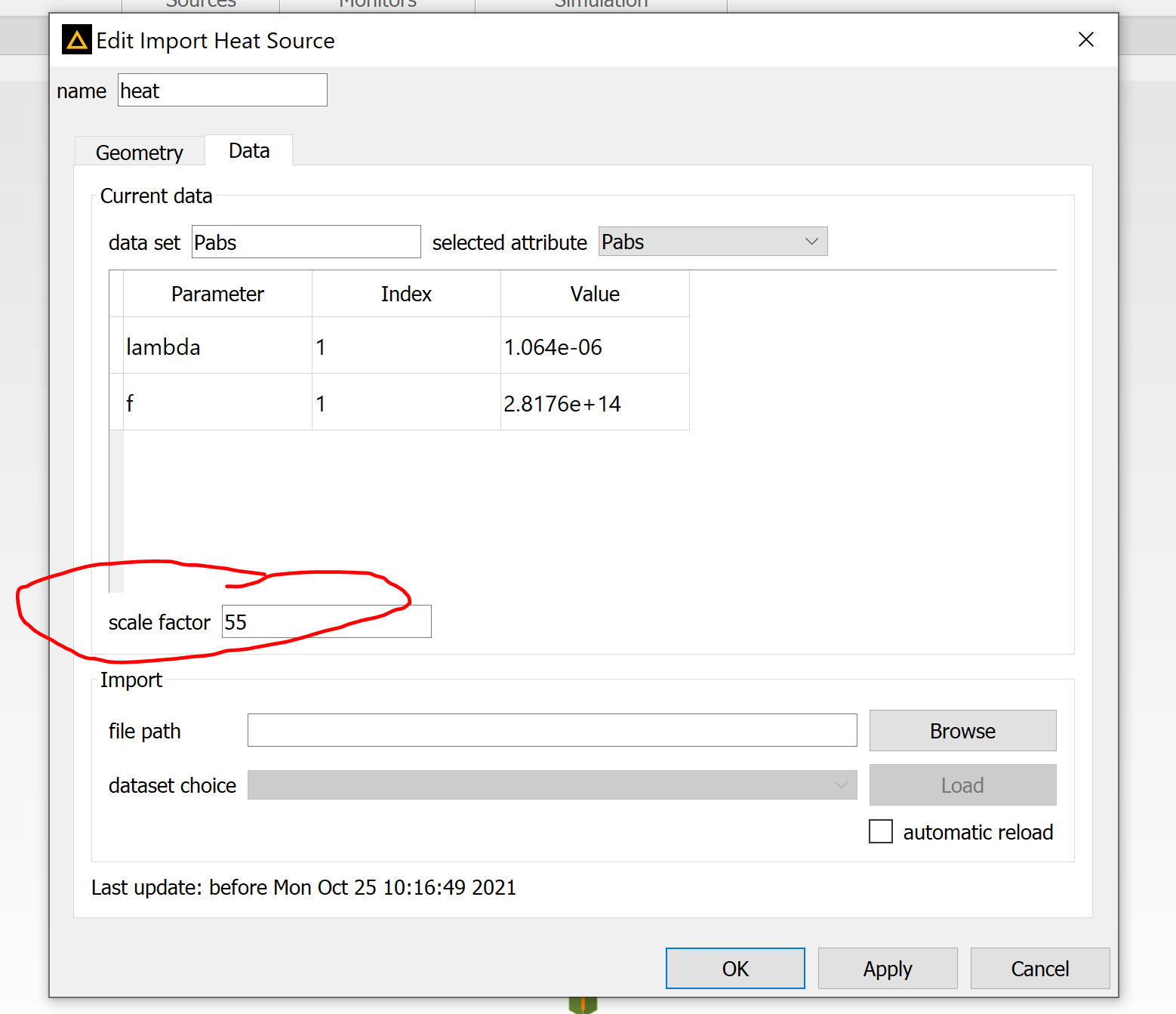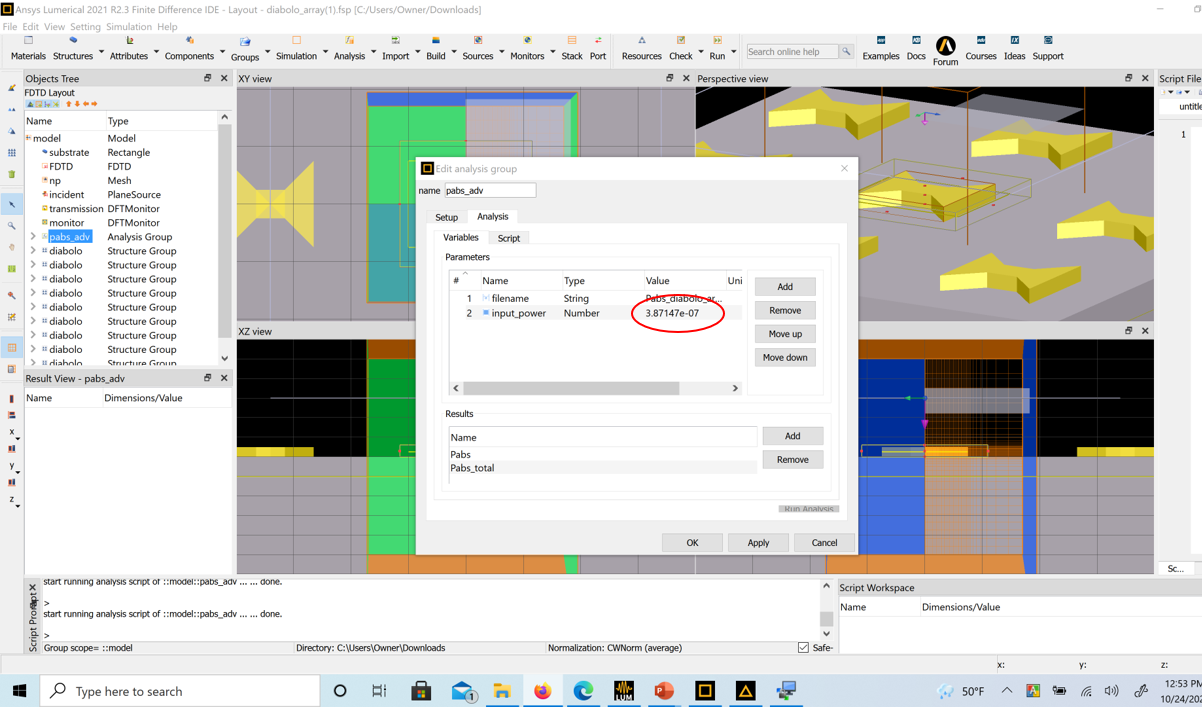-
-
October 24, 2021 at 7:11 pm
niazulkhan
SubscriberIn the plasmoncs example here at: https://support.lumerical.com/hc/en-us/articles/360041686234-Photothermal-heating-in-plasmonic-nanostructures, an input power of 3.87147e-07 W was used for the unit cell of the diabolo antenna a seen below.
October 25, 2021 at 5:21 pmGuilin Sun
Ansys EmployeeThe analysis group sets the monitor just on the absorbing structure, not the whole region to save memory. The monitor size does not have any relation with the source power. The source power is only related to the source amplitude and the area.
This example just uses another method to get the absorption power density. Usually, the analysis group just normalizes to the source power its power, so the result will be similar to 1Watt. In HEAT simulation one can modify the scale factor:
 In the above screen shot, 55 means the actual optical power absorbed is 55 times larger in HEAT than the original data from FDTD.
In the above screen shot, 55 means the actual optical power absorbed is 55 times larger in HEAT than the original data from FDTD.
If in FDTD it is normalized to the source power its self, then this scale factor will the actual optical power used in HEAT. eg, 0.001 will mean it is 1mW;1e-6 means 1uW and so on.
So you can do the power scaling quite easily either in FDTD or in HEAT, once you know what are used to normalize.
Viewing 1 reply thread- The topic ‘Analysis group setup in Photothermal heat generation using plasmonics example’ is closed to new replies.
Innovation SpaceTrending discussionsTop Contributors-
4718
-
1565
-
1386
-
1242
-
1021
Top Rated Tags© 2026 Copyright ANSYS, Inc. All rights reserved.
Ansys does not support the usage of unauthorized Ansys software. Please visit www.ansys.com to obtain an official distribution.
-
The Ansys Learning Forum is a public forum. You are prohibited from providing (i) information that is confidential to You, your employer, or any third party, (ii) Personal Data or individually identifiable health information, (iii) any information that is U.S. Government Classified, Controlled Unclassified Information, International Traffic in Arms Regulators (ITAR) or Export Administration Regulators (EAR) controlled or otherwise have been determined by the United States Government or by a foreign government to require protection against unauthorized disclosure for reasons of national security, or (iv) topics or information restricted by the People's Republic of China data protection and privacy laws.












